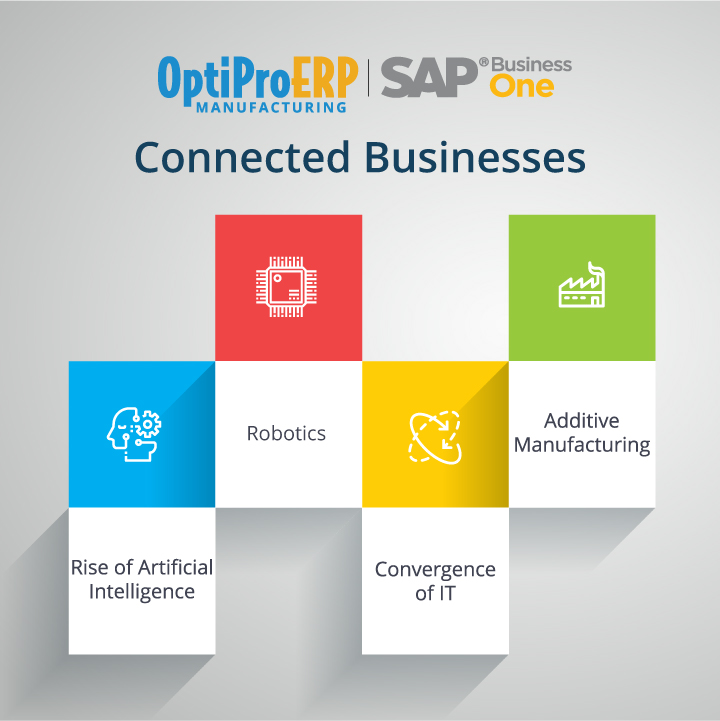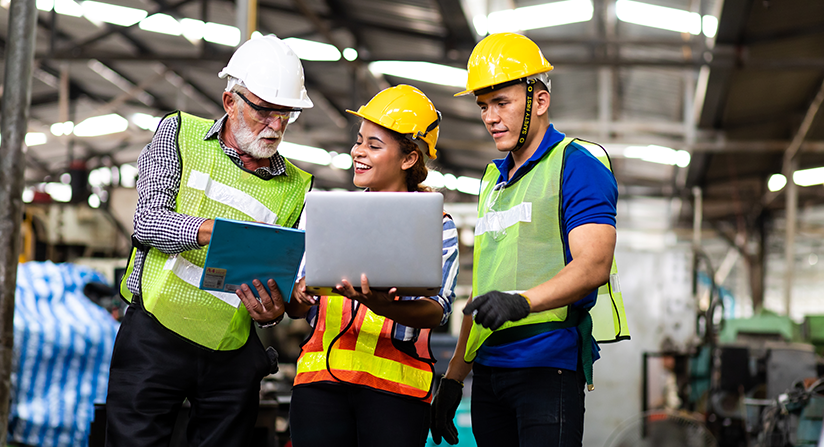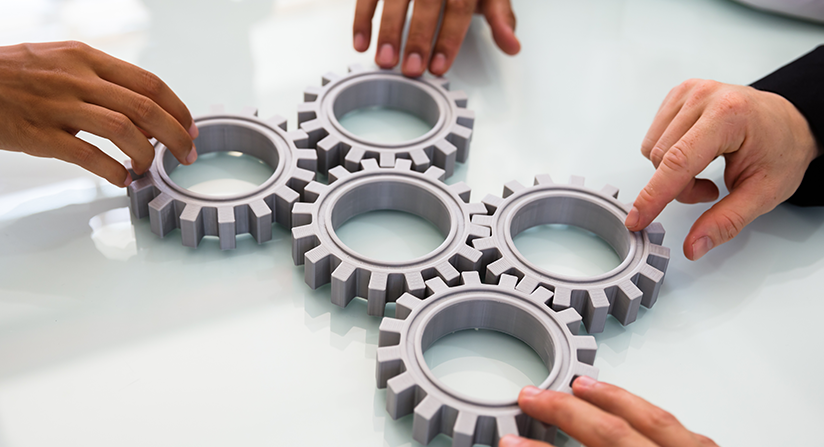Digital transformations are driving the manufacturing industry on a moment-to-moment basis. Just the way the industrial revolution impacted manufacturing, the digital transformations worldwide are responsible for changing the industry. Now most manufacturers are using technologies that are moving mass production to customized production, and this too is happening at a rapid pace. It’s no secret that digitization holds great promise for manufacturers and can fundamentally transform every aspect of a manufacturing business.
What are digital transformation trends in connected manufacturing?
There is a complete revolution in manufacturing factories especially with IoT, cloud computing, advanced analytics, and the latest manufacturing trends. IoT technology and ERP are helping manufacturers transform their businesses.
Connected intelligent machines and IT systems provide continuous insights, enabling manufacturing leaders to make more informed decisions with objective, up-to-date market data; to manage inventory in real-time, and revise processes and drive innovations to meet demand. Such hyper-connected networks of free-flowing data enable manufacturers to work with shorter lead times, forge a tighter link between supply and demand, develop new business models as market demand and opportunities arise, and accelerate new product introductions to the market.
Your organization no longer must be large to take advantage of these smart tools. For example, cloud ERP software is used by small, medium, and even large-sized manufacturing units and has substantially benefited each.
What do factory trends look like?
Basically, ‘Connected Businesses’ have come up with 4 major technology trends. These are primarily – robotics, the convergence of IT, the rise of artificial intelligence, and additive manufacturing.

These technologies have aided manufacturing companies to be responsive and highly efficient. Factory automation is driving collaboration with flexibility and responsiveness and real-time shop floor automation solutions make operations leaner. Likewise, AI technology has helped manufacturers predict demand patterns and respond far more accurately than human guesswork.
What are the drivers for connected manufacturing?
Connected manufacturing links operational technology (OT) with information technology (IT). It ensures all your processes, products, plants, and customers are well connected. This goes a step beyond the application of digital technologies to a holistic process of production. We once imagined a digital factory, robot-driven production floor, whereas todays’ reality has brought to life, factory floors with the entire manufacturing ecosystem connecting employees, processes, machines, data, and customers, which is far beyond what was once envisioned.
No enterprise would want to lag behind. Everyone wants to take advantage of connectivity to drive efficiency and uncover new business possibilities, right? So, drivers of connected manufacturing are broadly categorized as:
- Operational efficiency to ensure we gain time between failures and the time to repair.
- Improvement in the supply chain to gain visibility and track assets and inventory faster.
- Enhancement of customer experience.
- New product and innovation development.
What about Big Data?
IoT is providing real-time insights to manufacturers. IoT has amazing capabilities to collect data from combined sources to make big data usable. Thus, manufacturing business leaders are using data from hyper-connected networks to develop customized, meaningful products and services; factory workers are using continuous insights to predict and prevent machine failures and improve operational effectiveness, and customers are providing real-time usage data and experiential sentiment to inform how manufacturers innovate to support valuable experiences.
How are ERP software systems streamlining processes?
Empowering manufacturing leaders’ hinges on supporting real-time insights. ERP improves visibility to support a proactive response across the business; the ability to make targeted improvements to processes to save time, money, and resources; and new insights to spot trends and opportunities to advance a business. There are a few essential ERP software advantages every manufacturer must know, and questions such as What do modern manufacturers want for the future? are important to ask.
Manufacturing ERP
Through a robust technology platform, preconfigured solutions, and longstanding experience as both a service provider and solution provider, OptiProERP is empowering businesses to capitalize on the unprecedented opportunities of the future. If you are deciding on providing your manufacturing business the benefits of cloud ERP, get in touch with our executives and learn more about how OptiProERP can best serve your manufacturing business. OptiProERP’s approach is grounded on using your existing infrastructure. Choosing OptiProERP also means setting yourself up to tap a broader portfolio of solutions that deliver further advantages.
OptiProERP is a trusted manufacturing ERP solution that helps you keep up with technological advancements. The first step on your digital transformation journey can be your best step.
Follow Us





